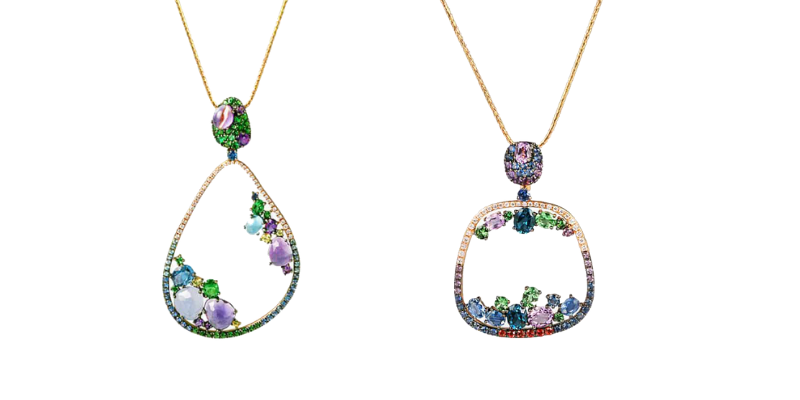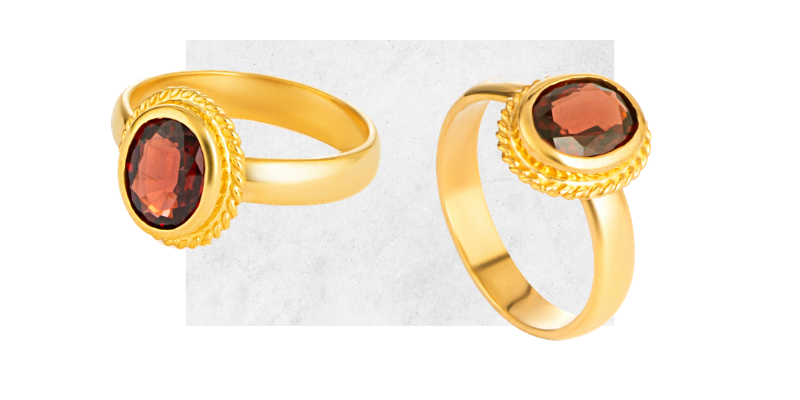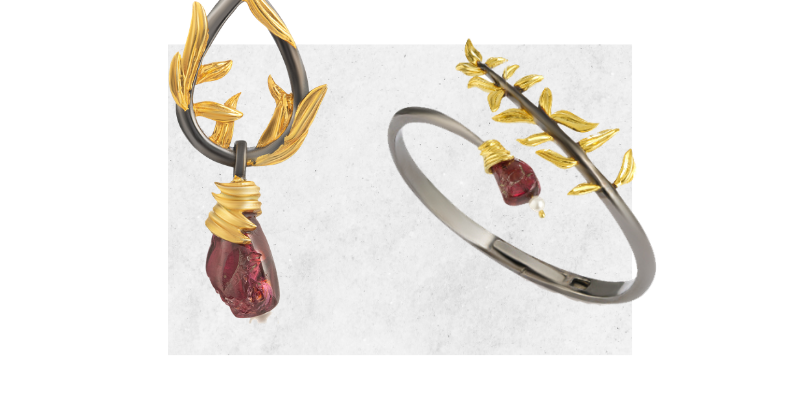The name ‘garnet’ comes from the Latin ‘granatum’ meaning pomegranate, due to how the crystal resembles the seeds of this delicious fruit.
It was said that the jewel possessed the ability to illuminate even the darkest of rooms, and it is written that Noah used the gem to light the inside of the ark.
A legendary stone favoured by royalty, garnet has been found in amulets worn by pharaohs as well as in signet rings owned by the nobility in Rome. This beautiful red crystal is thought to be one of the oldest gems used for spiritual protection throughout history. Since it has been discovered in all parts of the world, it has a rich history that spans the globe.

TYPES OF GARNET
Garnet is not a separate gemstone but a group of silicate minerals with similar components and structure. They are found in metamorphic rocks. Out of the 20 species of garnet, only 5 are commercially important- pyrope, almandine, spessartine, grossular, andradite and uvarovite. Each species has its unique colour, which is the most attractive feature of this commonly found gemstone.
It is worth noting that the various natural hues of garnet are a result of different chemical elements. Most red and brown garnets would have come into contact with iron as they were forming, while pink and orange stones are likely to contain manganese. Green garnet is due to the presence of aluminium, chromium or vanadium. Yellow garnets have calcium. Since the red garnet is the most abundant variety, it was only thought to be a red gemstone for so many thousands of years. This is because iron is so much more common in the earth than the other elements. Rhodolite, Tsavorite, Hessonite and Demantoid are some of the varieties of garnet.

TREATMENTS
Another important attribute about the garnet is that its colour is always natural (except for the demantoid garnet whose colour may be partially enhanced with heat treatment). Since the stone comes in a rainbow of colours, scientists are yet to find a way to enhance the colours of this gemstone.
CARING FOR YOUR GARNET
The best way to clean a garnet is using warm soapy water. Add a little mild detergent (such as washing up liquid) to a bowl of warm water and then use a soft cloth to gently clean the gemstone. Always try to clean the underside of the gem too as dirt can cause it to appear dull.
Avoid using an ultrasonic cleaner for your garnet, especially if it has a fracture. Fractures are not always visible to the naked eye; hence, it is better to be cautious. Keep your garnet pieces in a soft pouch or box to stop them scratching or being scratched by other gems. Remove your jewellery before using any household chemicals.

FUN FACTS
- The most expensive garnet is the demantoid, a brilliant green variety that resembles the emerald and exceeds the diamond in its dispersion. It is found in the Ural Mountains.
- Although a garnet comes in many colours, the rarest variety is blue, which was discovered in the late 1990’s in Bekily, Madagascar.
- Garnet is the birthstone for January and is associated with the zodiac sign of Capricorn.
- It is also the stone to celebrate the second and eighteenth anniversary of marriage and a gift stone for the 15th, 19th and 25th celebrations.
- Long before laboratory gem testing existed, garnet and ruby were often mistaken for each other. In fact, in Australia this gemstone was initially mistaken for a ruby when it was first found which led to the rise of 20 ruby companies. These companies collapsed when the identity of the gemstone was established.
From the ancient Egyptian civilization to the present day, garnet is seen as the ultimate symbol of love, passion, eternity and warmth.







